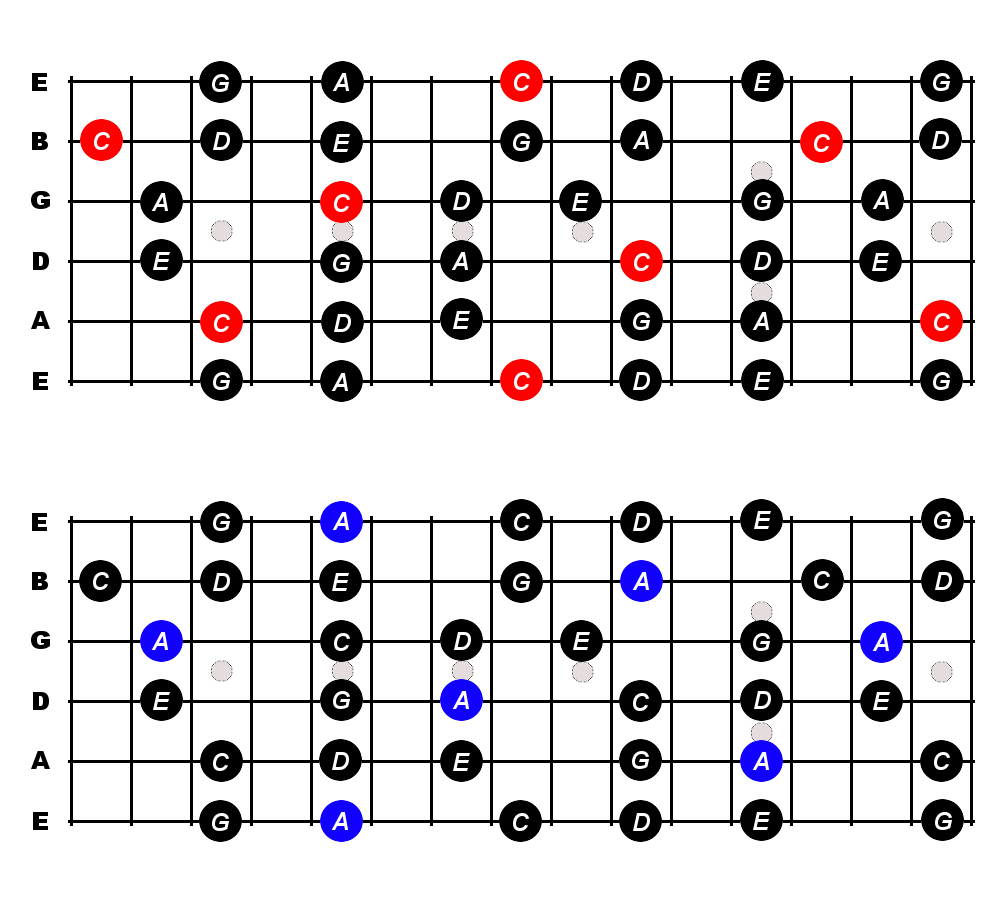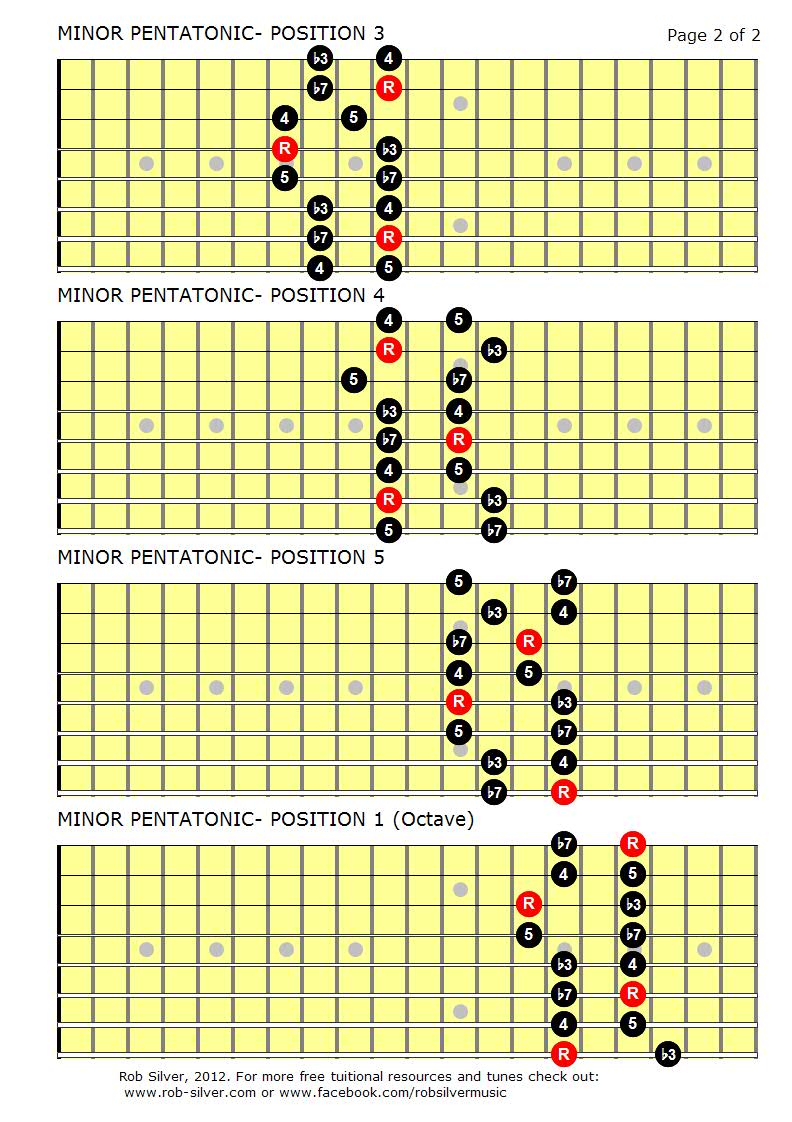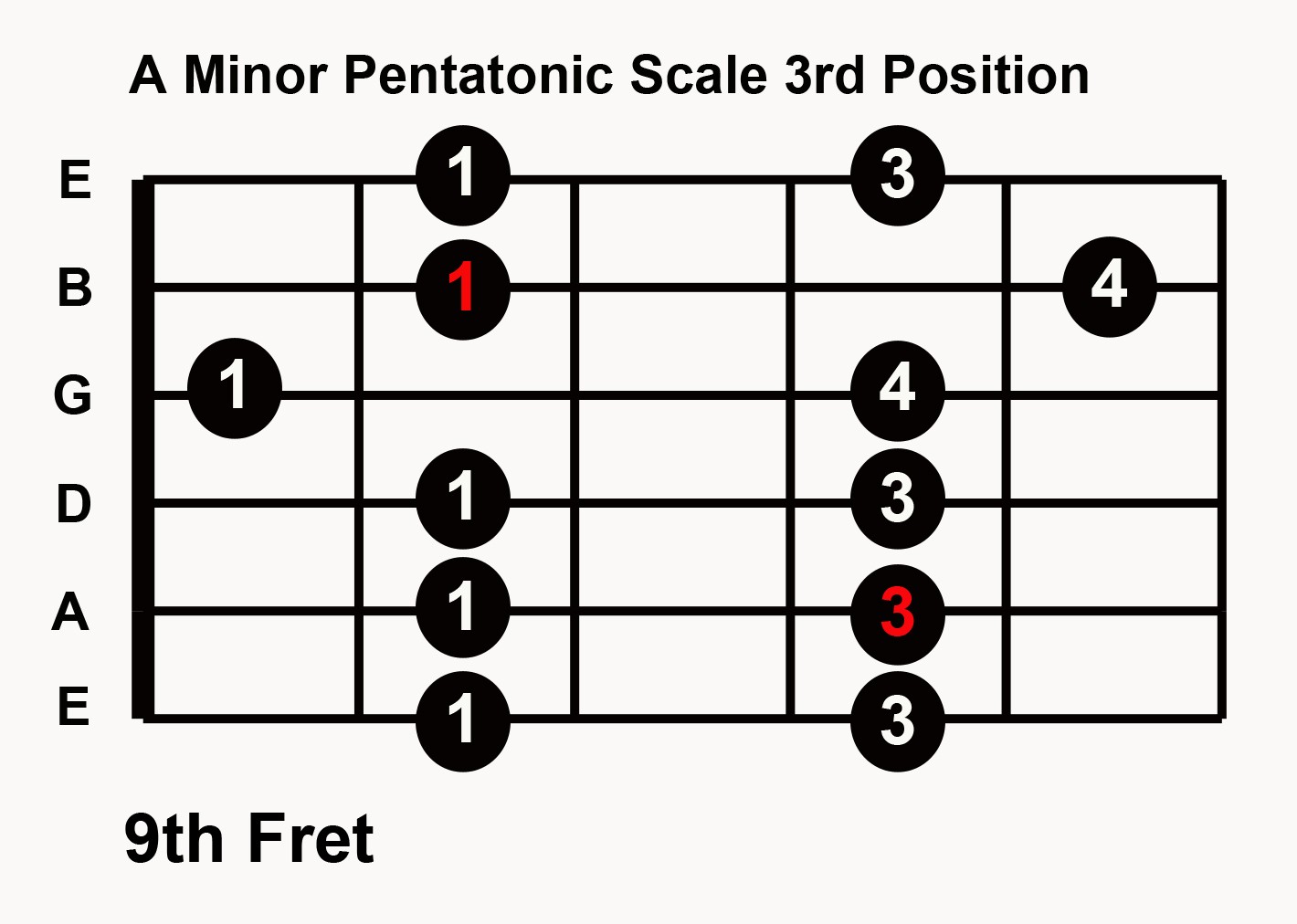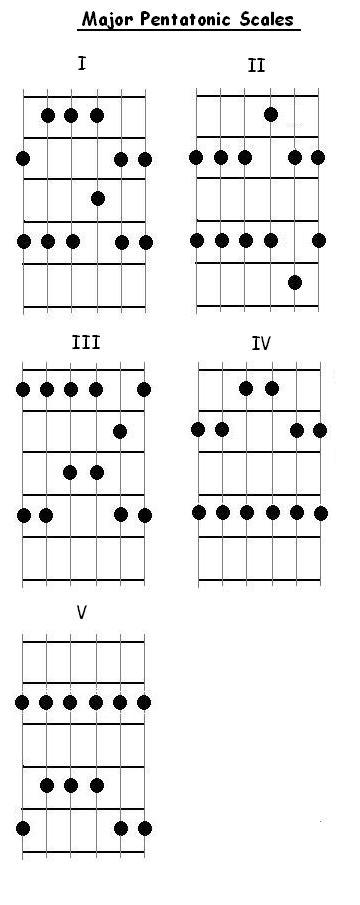The pentatonic scale is a fundamental tool for guitarists looking to expand their musical vocabulary and create memorable solos. With only five notes, this versatile scale can be used in a variety of musical contexts, from blues and rock to jazz and country. In this post, we will explore different pentatonic scale patterns and discuss how to incorporate them into your playing.
Pattern 1: The “Box Shape”
 The first pentatonic scale pattern we will explore is often referred to as the “box shape.” This pattern is commonly used in blues and rock music and can be played in various positions on the guitar neck. It consists of five notes played across two octaves, providing a wide range for improvisation.
The first pentatonic scale pattern we will explore is often referred to as the “box shape.” This pattern is commonly used in blues and rock music and can be played in various positions on the guitar neck. It consists of five notes played across two octaves, providing a wide range for improvisation.
Pattern 2: The “8-String Variation”
 If you play an 8-string guitar, this variation of the minor pentatonic scale is worth exploring. It incorporates the low B and high F# strings, allowing for a wider tonal range and more melodic possibilities.
If you play an 8-string guitar, this variation of the minor pentatonic scale is worth exploring. It incorporates the low B and high F# strings, allowing for a wider tonal range and more melodic possibilities.
Pattern 3: The “Fatpick Pattern”
 If you’re looking to improve your picking accuracy and speed, the “Fatpick Pattern” is an excellent exercise. This pattern focuses on alternate picking and can help you develop a strong sense of rhythm and timing while navigating the pentatonic scale.
If you’re looking to improve your picking accuracy and speed, the “Fatpick Pattern” is an excellent exercise. This pattern focuses on alternate picking and can help you develop a strong sense of rhythm and timing while navigating the pentatonic scale.
Pattern 4: The “3rd Position Blues Scale”
 If you want to capture the essence of blues guitar playing, mastering the “3rd Position Blues Scale” is crucial. This pattern is commonly used in blues and provides the foundation for countless iconic blues guitar solos.
If you want to capture the essence of blues guitar playing, mastering the “3rd Position Blues Scale” is crucial. This pattern is commonly used in blues and provides the foundation for countless iconic blues guitar solos.
Pattern 5: The “A-Pentatonic Scale”
 The “A Pentatonic Scale” is one of the most commonly used pentatonic scales in guitar playing. It is a versatile pattern that can be easily transposed to different keys, making it an essential tool for improvisation and songwriting.
The “A Pentatonic Scale” is one of the most commonly used pentatonic scales in guitar playing. It is a versatile pattern that can be easily transposed to different keys, making it an essential tool for improvisation and songwriting.
Pattern 6: Major Pentatonic Scales
 While the minor pentatonic scale is often associated with blues and rock music, the major pentatonic scale has its unique character. It adds a more uplifting and melodic flavor to your playing, making it suitable for genres like country, pop, and funk.
While the minor pentatonic scale is often associated with blues and rock music, the major pentatonic scale has its unique character. It adds a more uplifting and melodic flavor to your playing, making it suitable for genres like country, pop, and funk.
Pattern 7: The “5-Position System”
 To become a well-rounded guitarist, it’s crucial to learn the pentatonic scale in different positions across the neck. The “5-Position System” provides a systematic way to navigate the scale and helps you play solos that span the entire fretboard.
To become a well-rounded guitarist, it’s crucial to learn the pentatonic scale in different positions across the neck. The “5-Position System” provides a systematic way to navigate the scale and helps you play solos that span the entire fretboard.
Pattern 8: The Minor Pentatonic Blues Scale
 The minor pentatonic blues scale is a variation of the standard minor pentatonic scale. It incorporates an additional note known as the “blue note,” adding a unique and soulful flavor to your guitar solos. This pattern is widely used in blues and jazz music.
The minor pentatonic blues scale is a variation of the standard minor pentatonic scale. It incorporates an additional note known as the “blue note,” adding a unique and soulful flavor to your guitar solos. This pattern is widely used in blues and jazz music.
Pattern 9: Customizing Your Pentatonic Scales
 As you become more comfortable with the pentatonic scale, don’t be afraid to experiment and customize the patterns to suit your playing style. Adding slides, bends, and vibratos can give your solos a personal touch and make them stand out.
As you become more comfortable with the pentatonic scale, don’t be afraid to experiment and customize the patterns to suit your playing style. Adding slides, bends, and vibratos can give your solos a personal touch and make them stand out.
Pattern 10: Understanding Key and Scale Relationships
 Lastly, it is crucial to understand how the pentatonic scale relates to different keys on the guitar. Once you grasp this concept, you can easily play the pentatonic scale in any key and transpose your favorite licks and solos to different songs.
Lastly, it is crucial to understand how the pentatonic scale relates to different keys on the guitar. Once you grasp this concept, you can easily play the pentatonic scale in any key and transpose your favorite licks and solos to different songs.
The pentatonic scale is a powerful tool that every guitarist should have in their arsenal. By mastering these different patterns and techniques, you can create captivating solos and unlock a world of musical possibilities. So grab your guitar, start practicing, and let the pentatonic scale take your playing to new heights!